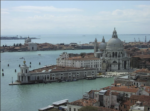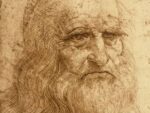Jamie Isenstein – Spectacle
.jpeg)
Mostra del lavoro dell’artista americana Jamie Isenstein, realizzato durante la sua residenza presso la galleria e nel suo studio di Brooklyn, New York.
Comunicato stampa
Gluck50 ha il piacere di presentare Spectacle, mostra del lavoro dell’artista americana Jamie Isenstein, realizzato durante la sua residenza presso la galleria e nel suo studio di Brooklyn, New York.
In inglese la parola spectacle ha due significati che si pongono agli estremi opposti del rapporto tra soggetto e oggetto. In un senso il termine significa performance appariscente e nell’altro è un sinonimo di occhiali. Il primo significato comporta l’essere guardati, mentre il secondo il guardare. Per la sua mostra alla Gluck50, Isenstein gioca su questo duplice significato per confondere soggetti e oggetti trasformando i corpi in oggetti e gli oggetti in corpi. Così facendo, l’artista spera di sovvertire la dinamica di potere intrinseca al rapporto soggetto/oggetto come modo per immaginare di conferire capacità e autonomia ai meno potenti.
Durante la residenza alla Gluck50 Isenstein ha viaggiato per il Nord Italia per indagare sulle parti del corpo esposte nei reliquiari delle chiese e nei musei di anatomia e sui turisti che vengono a vederle. L’artista è partita dalla domanda se questi corpi in mostra siano persone o oggetti. Ha concluso che, essendo esposti in parti e per via della presenza degli spettatori con il loro sguardo oggettificante, questi corpi non sono più persone, sono effettivamente diventati oggetti. In un gesto performativo, Isenstein ha poi fotografato i turisti che guardavano questi corpi, per trasformare gli spettatori in un’immagine, come modo per farne a loro volta degli oggetti. Tuttavia all’ingresso della Gluck50, la prima cosa che il visitatore vedrà sono i moduli di liberatoria per le fotografie firmati da questi turisti, che enfatizzano la loro capacità di prendere decisioni sul modo in cui vengono usate le immagini, a differenza dei corpi in mostra.
La Gluck50 è stata divisa in due gallerie speculari con performance dal vivo e registrate di corpi che diventano oggetti e di oggetti che diventano pubblico. In un video proiettato in una delle due si vede un paio di gambe con quattro piedi che ballano un tango come se si azionassero da soli. In realtà si tratta della performer Elena Vazintaris cha balla in uno specchio deformante, che ne cancella il corpo mentre si muove in modo tale per cui le gambe e le braccia diventano oggetti semoventi. Di fronte a questa proiezione c’è una serie di sculture di occhiali fatti di lenti di ingrandimento, telescopi e microscopi. Usando diversi tipi di lenti questi occhiali vedono da prospettive diverse, e assumono ciascuno una sua soggettività.
Nella seconda galleria una ruota di automobile con gambe che indossano pattini a rotelle è appoggiata su un piedestallo, sul punto di rotolare via. Essendo una ruota con le ruote, l’opera è un simbolo di autonomia; sia soggetto che oggetto con la capacità di muoversi. Le gambe appartengono a un essere umano vivo per cui l’opera oscilla tra performance e scultura. Come i corpi in mostra nelle chiese e nei musei di anatomia, questa performance-scultura con le sue gambe scorporate sembra presentare il corpo come oggetto. A differenza dei cadaveri esposti tuttavia, questo corpo rimane perennemente vivo poiché gli attori si sostituiscono continuamente nei momenti di intervallo.
Sulla parete opposta alla performance/scultura con la ruota è proiettato un video di una sola mano che applaude. È un’azione che di solito richiede due mani, per cui questa unica mano che applaude sta compiendo una prodezza. In questo modo, diventa anch’essa un altro simbolo di autonomia, facendosi pubblico e spettacolo.
Nelle gallerie sono appese anche due fotografie che fanno parte delle ricerche di Isenstein sui cadaveri esposti al pubblico. Una è un frammento dell’orbita di un teschio vero disposto accanto a una versione in cera dell’occhio come se fosse vivo. L’altra ritrae un gruppo di turisti alla Basilica di Sant’Antonio da Padova, che osservano la lingua del santo esposta in un reliquiario dorato. La prima immagine raffigura il corpo come oggetto, tuttavia l’oggetto guarda di rimando lo spettatore. La seconda immagine ritrae gli spettatori stessi, anche se si pone la questione di cosa guardino mentre guardano la lingua di Sant’Antonio, non a caso perché Sant’Antonio è il santo delle cose perse.
Jamie Isenstein è nata a Portland, Oregon, ma attualmente vive e lavora a Brooklyn, New York. Le sue opere sono state esposte di recente al MARTa Herford di Herford, Germania, al Whitney Museum of Art, New York, e all’Atlanta Contemporary Art Center, USA. Il suo lavoro è stato presentato anche al MoMA/PS1 di New York, alla Tate Liverpool, UK, al Palais de Tokyo di Parigi, all’Hammer Museum di Los Angeles e al Manchester International Festival, UK. L’anno prossimo presenterà un progetto nella Great Hall dell’Institute of Fine Arts della New York University.
Gluck50 è uno spazio espositivo e un programma di residenza che ha sede a Milano, dove artisti internazionali e italiani vengono invitati a creare ed esporre nuovi progetti. Nel 2018 sarà pubblicato un catalogo che documenta la residenza e la mostra di Jamie Isenstein alla Gluck50. Per ulteriori informazioni, contattare Chiara Calini all’indirizzo [email protected]
SPECTACLE
JAMIE ISENSTEIN
Opening 14 settembre h. 18:30
15 settembre – 17 novembre 2017
Lunedì – Venerdì h 10:00 – 18:00
Gluck50 Milano
Via Cristoforo Gluck, 50
I – 20125 Milano
T. +39 02 454846
www.gluck50.com
--------------------------------------------------------------
SPECTACLE
JAMIE ISENSTEIN
Opening 14th September h. 6.30 pm
Gluck50 Milan
Gluck50 is pleased to present Spectacle, an exhibition of work by American artist Jamie Isenstein created both in residence at Gluck50 and at her studio in Brooklyn, New York.
The word spectacle has two meanings in English that fall on opposite sides of the subject/object relationship. In one sense the word refers to a showy performance and in the other sense it is another word for eyeglasses. The first meaning demands to be watched, while the second meaning does the watching. For her exhibition at Gluck50, Isenstein plays on this double meaning to confuse subjects and objects by turning bodies into objects and objects into bodies. In doing this, Isenstein hopes to flip the power dynamic inherent in the subject/object relationship as a way to imagine giving agency and autonomy to the less powerful.
While in residence at Gluck50 Isenstein traveled through Northern Italy to investigate body parts displayed in church reliquaries and anatomy exhibits as well as the tourists who came to look at them. Isenstein began with the question of whether these bodies on display are people or objects. By being displayed in parts and because of the presence of the spectators with their objectifying gaze, Isenstein has concluded these bodies are no longer people, they have indeed turned into objects. In a performative gesture, Isenstein then proceeded to photograph the tourists looking at these bodies, to turn the spectators into an image as a way to objectify them in return. Yet at the entrance to Gluck50, the first thing a visitor will see are the photo release forms signed by these tourists, emphasizing their ability to make decisions about how their images are used, unlike the bodies on display.
Gluck50 has been divided into two mirroring galleries with live and recorded performances of bodies becoming objects as well as objects becoming audiences. In one gallery a video depicts a pair of legs with four feet dancing to a tango as if the legs were powered by themselves. The video is actually performer Elena Vazintaris dancing in a carnival mirror, erasing her body as she moves so that the legs and arms become self-propelled objects. Facing this projection is a series of sculptures of eyeglasses made from magnifying glasses, telescopes and microscopes. By using different types of lenses these eyeglasses see from different perspectives, giving each glasses their own subjectivity.
In the second gallery a car wheel with legs wearing roller skates lies on a pedestal on the verge of rolling away. As the work is a wheel wearing wheels, it is a symbol of autonomy; both a subject and an object with the ability to move itself. The legs on the wheel are live human legs so that the work alternates between being a performance and a sculpture as well. Like the bodies on display in churches and anatomy museums, this performance-sculpture with its disembodied legs appears to present the body as an object. Unlike the dead bodies on display though, this body remains perpetually alive as actors continuously replace each other in between moments of intermission. Projected on the wall across from the wheel performance/sculpture is a video of a single hand clapping. Typical clapping requires two hands, so this hand clapping by itself is performing a feat. In this way, it too becomes another symbol of autonomy, as both an audience and a spectacle itself.
Two photographs from Isenstein’s investigations into dead bodies on display are hung in the galleries as well. One photograph is of a fragment of a real skull’s eye socket placed next to a wax version of the eye as if it was alive. The other photograph is of a group of tourists at the Basilica of Saint Anthony of Padua, observing Saint Anthony’s tongue displayed in a golden reliquary. The first image depicts the body as objects, yet the objects are also looking back at the viewer. The second image depicts the spectators themselves, though what they are looking for when they look at Saint Anthony’s tongue is another question, not coincidentally because Saint Anthony is the saint of lost things.
Jamie Isenstein was born in Portland, Oregon USA, but currently lives and works in Brooklyn, New York, USA. Her work has been shown recently at the MARTa Herford museum in Herford, Germany, the Whitney Museum of Art, New York City, NY and the Atlanta Contemporary Art Center, Atlanta GA, USA. Her work has also been shown at MoMA/PS1, New York, NY, the Tate Liverpool, UK, the Palais de Tokyo, Paris, the Hammer Museum, Los Angeles and the Manchester International Festival, UK. Next year she will present a project in the Great Hall at the Institute of Fine Arts, NYU in New York City.
Gluck50 is an exhibition space and artist residence based in Milan, Italy where international as well as Italian artists are invited to create and exhibit new projects. A forthcoming catalogue documenting Jamie Isenstein’s residency and exhibition at Gluck50 will be published in 2018. For more information, please contact Chiara Calini at



